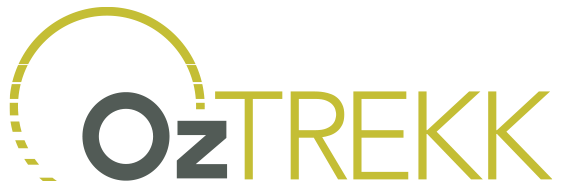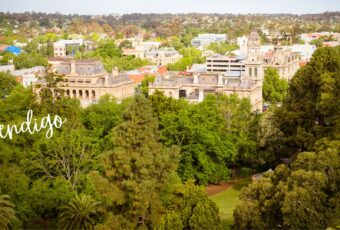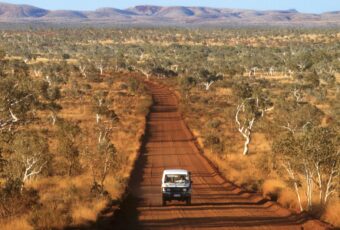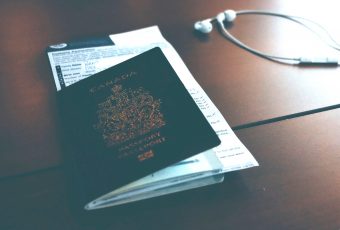Overview
Important: The information on this page is intended to provide you with the basics of the credentialing process. It is your responsibility to contact your provincial regulatory body to ensure you are familiar with the process to return. While we review this content on an annual basis, it is subject to change at any time. Please ensure you review all information provided by the regulatory bodies for the most up-to-date information. OzTREKK is not responsible for your credentialing process.
The veterinary science programs at the University of Melbourne, the University of Queensland and the University of Sydney hold full American Veterinary Medical Association AVMA accreditation, which is the North American standard for vet accreditation. You can find the each of these universities listed on page 3 of the Accredited Colleges of Veterinary Medicine published by the AVMA.
Both the graduate-entry and undergraduate-entry veterinary medicine programs will allow you to practice as a veterinarian in North America as well in Australia. The name of the program does not necessarily affect its accreditation status. The program is not required to be a “Doctor” program in order to be accredited here in North America; it is the content and quality of the program that determines its eligibility, not simply the name.
This means that graduates are considered in the same category as graduates from North American veterinary schools when undertaking licensing examinations in North America. Graduates of these programs are eligible to sit the North American Veterinary Licensing Examination (NAVLE) along with graduates from AVMA accredited veterinary colleges in the United States and Canada.
Applicants are reminded to consult the licensing body of the province where they wish to obtain a license for specific requirements.
Steps to Practice in Canada
How do you become a veterinarian in Canada?
1. Register with the NEB (for Canada only)
Once you have graduated from your AVMA-accredited veterinary program, you must register with the Canadian National Examining Board (NEB). The NEB reviews the credentials of graduates of non-Canadian colleges of veterinary medicine who wish to obtain a licence to practice veterinary medicine in Canada.
2. Write the NAVLE
Once the NEB has approved your credentials, the North American Veterinary Licensing Examination (NAVLE) can be taken during two testing windows each year: mid-April and late November/early December. You are strongly encouraged to wait until all clinical rotations have been completed before sitting the NAVLE. This usually means waiting until November – December as these are invaluable for providing the general clinical awareness and experience needed to pass the NAVLE.
Once you successfully complete the NAVLE, you will be granted a Certificate of Qualification (CQ). You must complete this exam within 2 attempts, otherwise an additional Clinical Proficiency Exam (CPE) is required.
3. Apply for Registration with Provincial/State Board/College
A CQ or completion of the examination process is a prerequisite to apply for a general veterinary license in all the provinces of Canada and US states. You will then need to apply to register with the provincial/state board/college. You can use the ICVA Licensing Boards web page to find the licensing board for each province/state. The licensing authorities in any province/state may require further examinations in addition to or in lieu of those required to obtain a CQ.
4. Complete additional steps for provincial membership as needed, such as the College of Veterinarians of Ontario’s (CVO) Jurisprudence Exam.
Provincial Requirements
Provincial requirements:
While all Canadian provinces require you to have passed the NAVLE in order to become licensed to practice, some provinces have additional licensing requirements, such as the College of Veterinarians of Ontario’s (CVO) Jurisprudence Exam. Check the website for the provincial regulatory body where you intend to practice:
Alberta Veterinary Medical Association
College of Veterinarians of British Columbia
Manitoba Veterinary Medical Association
New Brunswick Veterinary Medical Association
Newfoundland and Labrador College of Veterinarians
Nova Scotia Veterinary Medical Association
College of Veterinarians of Ontario
L’Ordre des médecins vétérinaires du Québec
Saskatchewan Veterinary Medical Association
NWT Dept of Health and Social Services
About the NAVLE
The examination consists of 360 multiple-choice questions, answered on computer at a private testing center. Sixty of the items are unscored pretest items, but the identity of these items is not apparent, and they are dispersed throughout the test. Approximately 15% – 20% of the items on the NAVLE include graphic or pictorial information relevant to the item (photograph, radiograph, drawing, chart, etc.).
- All NAVLE items are relevant to entry-level private clinical practice.
- There is a total of 6.5 hours test time (6 blocks of 65 min each)
- A total of 45 minutes of break time can be taken during the day (including lunch)
- The pass mark is 70%
Because of this large number of questions and the time constraints, being successful requires a sensible exam strategy and familiarity with the format (lots of practice tests!)
In most cases, provincial regulation requires applicants to pass the NAVLE within two attempts.
Practicing in Australia
The University of Melbourne, University of Sydney, and University of Queensland are all recognized by the Australasian Veterinary Boards Council through the Veterinary Schools Accreditation Advisory Committee (VSAAC), making veterinary science graduates eligible for registration with the Veterinary Surgeons’ Board in each state and territory in Australia, and in New Zealand.
Australia’s skilled visa programs are designed to target genuine skill shortages in Australia, one of those being veterinarians. This means that there are specific visas available to individuals who are qualified to work or train as a veterinarian in Australia and can meet all other requirements. You will need to contact the Australian Department of Home Affairs either in Canada or while you are in Australia for full details.
Accreditation in Australia
Upon graduating from an accredited Australian program, you must register within the state in which you wish to practice. In Australia, registration boards are governed by state legislation.
In the past, veterinarians have been required to be registered in every state in which they want to practice. Australia is in the process of setting up national recognition of veterinary registration which will mean that a vet’s home state registration will be recognized by all other Australian jurisdictions.
This national recognition model is slowly being introduced across jurisdictions. In Victoria, New South Wales, Queensland, Tasmania and South Australia, veterinarians residing and registered in another Australian jurisdiction can practice without registering in those states.
FAQs
Can my partner or family come to Australia with me if I get an offer?
Many Canadians wish to fulfill their career goals after getting married, having kids, or both! We’ve had plenty of students who have taken their partner and/or children with them.
If you want to take your partner or family with you, you’ll need to add them as a secondary applicant or dependents to your student visa application. Even if you don’t plan on taking them with you, we suggest you add them to your application anyway because it can be complex, expensive, and time-consuming to add them afterwards. You’ll then need to provide additional documentation to support your claims of a relationship or your children’s dependency status.
In addition to looking after the visa, you’ll also need to ensure they’re included on your Overseas Student Health Cover (OSHC), you have appropriate accommodation, and if you’re bringing children, you’ll need to enroll them in school.
Visit our Health Insurance page for more information.
When should I apply?
We recommend you begin your OzTREKK application about a year before your program would start. Most programs in Australia start between January and March, so that means you would start your OzTREKK application between January and March the year prior.
Here’s how the typical “cycle” works if your program starts January – March:
March – May: You gather all required documents like passport photo page, transcripts, résumé, personal statement, and send them to our office. Don’t worry, we’ll tell you exactly what we need!
June – August: Interviews (if your program requires one)
September – December: Offer time! If you get an offer, we’ll walk you through the acceptance (or decline) process and give you all the help you need to get ready to go.
January – March: Time to head Down Under!
Can I apply if I’m only 17?
Yes, but you’ll require parental or guardian consent (signature). OzTREKK will provide the necessary documentation for this signature.
If you won’t be 18 when your program starts, you’ll be required to show that you’ll be living with an approved guardian until you turn 18. If you don’t have an approved guardian in Australia, you may need a family member to apply for a guardian visa to accompany you. This guardian visa should be obtained as part of the student visa application
Can my entire application be submitted through OzTREKK?
Absolutely. We manage and submit your application(s) on your behalf and communicate any updates from the universities.
Applying to an Australian or New Zealand university starts by filling out our OzTREKK application: You’ll tell us a bit about yourself, like your name, address, date of birth, education history, and what schools you want to apply to!
When you click “Submit,” the application with all your information only comes to us, so there’s no need to worry about making a mistake at this stage. We then create a file for you (based on your name, not a number!) and email you a list of documents required to complete your application—things like passport photo page, transcripts, résumé, personal statement—but it depends on the program, as some programs require more paperwork than others.
If you get an offer, we’ll help you with that part, too! Whether you want to accept or decline, we’ll help you figure out your next steps. If you accept your offer, we’ll even help you get ready to go. We’re here to be an advocate for you, and to walk you through the entire process from start to finish.
Should you have any questions along the way, just send us an email or book a chat. That’s why we’re here!
Are there any scholarships for international students?
Scholarship options in Australia are usually limited for international students as they tend to be reserved for those undertaking postgraduate research degrees; however, we can advise you where to look and whether specific programs have a history of offering scholarships.
Occasionally, scholarships are granted to high achievers—those with very high marks. In previous years, we have seen $5000- to $10,000-scholarships given to OzTREKK students.
Check out OzTREKK’s Financing page to learn more about scholarships and paying for your degree.
Do you have course outlines on file?
Before sending us outlines, check to see if we’ve already got them. We can save you a lot of time and ensure we’re submitting good outlines on your behalf. Outlines must be within 2 years of the time you took the course (as listed on your transcript).
I received a low mark on my prerequisite course. Will this impact my application?
To meet the prerequisite subjects, you need to have been granted the credit (passed); the grade isn’t considered in the prerequisite assessment.
What does “rolling admissions” mean?
Rolling admissions means the university assesses applications as they are received, or on a “first come, first served” basis. As soon as they’ve met the quota and the program is filled, they close the applications. So, for a program that has rolling admissions, the earlier you apply the better!
How does OzTREKK know if my application will be competitive?
The majority of Canadians applying to full-degree programs in Australia (i.e., not study abroad courses, which usually only last a semester or two) apply through OzTREKK. They’re studying medicine, dentistry, law, physiotherapy, occupational therapy, etc.
Since they’re using OzTREKK’s services, this gives us a good idea of the starting point of a competitive application each year, allowing us to help you determine which universities/programs are most likely to present you with a letter of offer!
You can get started on determining your chances by reviewing the admissions requirements on each program page. Then, visit our GPA Conversions and Eligibility pages for details and suggestions to help you get into the program of your dreams. Of course, OzTREKK is always here to help if you have questions.
What is a 5.0 GPA in Australia?
Unlike in Canada, GPAs in Australia are simple. They are standardized, so they mean the same thing to everyone.
In Australia, a 5.0 / 7.0 would roughly translate to a 2.7 / 4.0 or approximately 70% – 72%, but keep in mind all universities assess slightly differently.
Learn more on our GPA Conversions page where we list the most common Canadian GPA scales to their corresponding Australian GPA grade.
Which prerequisites do I need?
Prerequisite courses vary by university and by program. We’ve listed university- and program-specific requirements on each program’s page under “Admissions Requirements.”
How do universities calculate GPA?
Calculations differ by university, but most use cumulative (all units within a program) or weighted GPA (typically last 2 or 3 years of study). See GPA Calculations for more information.
What is a “school leaver”?
“School leaver” is a term used by Australians (and those in the UK) that refers to someone who has graduated high school.
Australia offers professional undergraduate programs—like medicine or veterinary science—that may require an applicant to apply straight from high school without having any post-secondary education. In their admissions requirements, you may see “open to school leavers only,” so anyone who has post-secondary studies (completed or not), aren’t eligible to apply.
If you’re not sure if you qualify for a program, reach out! Contact us at info@oztrekk.com.
What are official transcripts, and how do I send them?
For a transcript to be considered “official,” it must be sent directly from your high school, college, and/or university (either via snail mail or by email). It can even come from you—as long as it arrives in the original, sealed envelope.
To assess your application, universities must see your official transcripts certified by OzTREKK—a requirement of Australian and New Zealand universities and a part of our agreement with them.
By email (preferred method): Your high school, college and/or university can email them to transcripts@oztrekk.com or they can use an official transcript service, like Parchment or MyCreds. When submitting a request for a digital transcript and a password is required, please use OZTREKK1 (all capitals, no spaces). If you have a character limit or need to set an access pin, please use 1234.
By mail (only if unable to send via email): Please order your transcripts to be sent directly to our office from all institutions where you have studied since high school, including any college studies, exchanges, transfer credits, and/or advanced placement (or IB) studies. Please note, some programs also require high school transcripts; if this is the case, your student advisor will let you know.
Send your documents via FedEx or Purolator, especially when you need your documents to arrive at our office ASAP. If you use Canada Post’s courier Xpresspost, please don’t request a signature, as this can add delays.
OzTREKK
301–1 Sherbrooke Street East
Perth, ON K7H 1A1 Canada
As soon as your transcript arrives, we’ll let you know!
What are the average marks for entry into a vet program?
Most undergrad-entry eligible candidates have a high school diploma with an overall average of approximately 85% – 88%. If applying with some university studies to The University of Queensland, an average of 75% or above is required. For graduate-entry DVM programs, a 77%+ is generally eligible for The University of Melbourne, and a 90%+ for The University of Sydney.
Keep in mind entry is competitive and meeting minimum GPA requirements does not guarantee entry.
When are the application deadlines?
Variable; however, candidates are encouraged to apply as early as possible before the deadline. Most OzTREKK students begin their applications in January / February for the following February / March start date.
What if my degree is more than 10 years old?
For competitive programs, many universities will only accept applications from students who have studied within the last 10 years. Universities want to make sure the knowledge that students have is still relevant and that students are prepared to take on additional studies. If you’ve studied more than 10 years ago, consider the following options:
1. Complete another degree
If you haven’t completed a degree within the last 10 years and your program of choice requires it, you’ll need to complete another degree. For some universities, this may mean you can complete a master’s (or bachelor’s) degree in Canada and then apply again.
University of Sydney DVM – You must be able to provide evidence that you’ve passed the prerequisite subjects with at least credit average by showing the official transcript with final mark. There is some flexibility for applicants who have stayed in scientific academia.
University of Melbourne DVM – If you graduated more than 10 years ago, you’ll be required to demonstrate your capacity for continued study. Typically, this would mean demonstrating that your knowledge of the prerequisite subjects is still current by having achieved a mark of at least 70% in each of those subjects within the last three years.
University of Queensland BVSc – Qualifications completed more than 10 years ago may be considered as basis for admission to undergraduate or postgraduate programs; however, credit will not be granted for studies completed more than 10 years ago.
2. Complete additional studies and re-apply
University of Sydney DVM
Must complete another degree – Where there are more than one completed degrees, the best GPA will be used. GPA is calculated over the entire duration of the degree and all years of study are weighted equally. Results from completed honours and postgraduate coursework degrees are included in the GPA calculation. Incomplete degree results will not be included. The discipline of the degree is not considered during the ranking process.
University of Melbourne DVM
Complete additional upper-level science courses – The University of Melbourne will consider upper-year science subjects (300- and 400-level courses), rather than cumulative GPA. Melbourne weights their science GPA 75:25 toward the 400-level subjects, meaning your 400-level courses are weighed 3 times as much as your 300 level. Subjects can be taken outside a degree (non-award) will be considered. Courses must be science subjects Melbourne defines a science subject as a subject dealing with the scientific basis of physical or biological sciences, but not including social sciences such as sociology, human behavior, history of science, economics, philosophy (including philosophy of science), and anthropology. This list is indicative and not comprehensive.
What if I don’t have a relevant degree?
The University of Melbourne DVM program requires applicants have a science degree with a majors in one of the following areas: agriculture, animal science, biochemistry, biomedicine, physiology, or zoology. If you don’t have an applicable degree, consider the following options:
1. Take science-related studies and re-apply
You may re-apply with either a master’s degree or after having completed upper-level science courses (if eligible). The University of Melbourne will consider upper-year science subjects (300- and 400-level courses), either at bachelor’s or master’s level. Subjects can be taken outside a degree (non-award studies).
Melbourne defines a science subject as a subject dealing with the scientific basis of physical or biological sciences, but not including social sciences such as sociology, human behavior, history of science, economics, philosophy (including philosophy of science), and anthropology. This list is indicative and not comprehensive.
2. Consider applying to a different program
If you’re interested in working with animals, but the other options won’t work for you, consider applying to a degree in veterinary technology, zoology, animal or environmental conservation, etc. instead, as long as your GPA meets the minimum requirements.
What if my GPA doesn’t meet the minimum or I’m not competitive?
If your GPA does not meet the minimum requirement for veterinary medicine, we’re not able to submit the application.
University of Melbourne DVM
Complete additional upper-level science courses – The University Melbourne will consider upper-year science subjects (300- and 400-level courses), rather than cumulative GPA. Melbourne weights their science GPA 75:25 toward the 400-level subjects, meaning your 400-level courses are weighed 3 times as much as your 300 level. Subjects can be taken outside a degree (non-award) will be considered. Courses must deal with the scientific basis of physical or biological sciences, but not including social sciences such as sociology, human behavior, history of science, economics, philosophy (including philosophy of science), and anthropology. This list is indicative and not comprehensive.
University of Sydney DVM
Must complete another degree – For the University of Sydney’s DVM program, where there are more than one completed bachelor’s degrees, the best GPA will be used. GPA is calculated over the entire duration of the degree and all years of study are weighted equally. Results from completed Honours and postgraduate coursework degrees are included in the GPA calculation. Incomplete degree results will not be included. The discipline of the degree is not considered during the ranking process.
Undergraduate veterinary degrees (Sydney BVB/DVM and UQ BVSc)
Take college/university studies – The GPA requirement is lower for applicants with a year of more of post-secondary studies (uni or college).
Consider another program
If you’re interested in working with animals, but the other options won’t work for you, consider completing a degree in veterinary technology, zoology, animal or environmental conservation, etc. instead, as long as your GPA meets the minimum requirements.
What if I didn’t pass the Casper SJT?
It’s uncommon for OzTREKK to see students not meet the Casper requirements for Sydney, UQ, and Melbourne veterinary schools.
If you failed to meet conditions of an offer due to the Casper situational judgement test, you’ll need to re-apply for next available intake, and you’ll be required to retake the test. Your application must be submitted to the university before you’ll be able to register for the test. Please read Applying to veterinary schools in Australia: What is the Casper test? for more information


































Ask A Question
Ask us about your program of interest, or if you have a question about our services.
CONTACT US TODAY